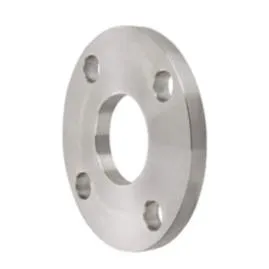-
Cangzhou Yulong Steel Co., Ltd.
-
Phone:
+86 13303177267 -
Email:
admin@ylsteelfittings.com

Dec . 14, 2024 01:45 Back to list
carbon steel weld fittings
Understanding Carbon Steel Weld Fittings
In the world of industrial piping, the choice of materials and fittings is crucial for ensuring reliability and efficiency. Among various materials, carbon steel stands out as a preferred option, particularly for weld fittings. This article delves into the properties, types, advantages, and applications of carbon steel weld fittings, providing insights to help engineers and construction professionals make informed decisions.
What is Carbon Steel?
Carbon steel is a type of steel that contains carbon as the primary alloying element. It typically consists of iron with a carbon content that ranges from 0.05% to 2.0%. Depending on the carbon content, carbon steel can be classified into three categories low carbon, medium carbon, and high carbon steel. Low carbon steel is known for its ductility and weldability, whereas high carbon steel provides superior strength and hardness but tends to be less malleable. For weld fittings, low to medium carbon steels are most commonly used due to their balance of strength and ductility.
Properties of Carbon Steel Weld Fittings
1. Strength and Durability Carbon steel weld fittings have excellent mechanical properties that allow them to withstand high pressures and temperatures. This makes them suitable for various applications in industries like oil and gas, chemical processing, and construction.
2. Corrosion Resistance While carbon steel itself is prone to rust, weld fittings can be treated with protective coatings or used in conjunction with corrosion-resistant materials to enhance longevity.
3. Weldability Low carbon steel, in particular, exhibits excellent weldability, which is essential for creating strong, leak-proof joints in piping systems.
4. Cost-Effectiveness Compared to other materials such as stainless steel or brass, carbon steel is generally more affordable, making it a cost-effective choice for large projects.
Types of Carbon Steel Weld Fittings
Carbon steel weld fittings come in various shapes and sizes, each serving different functions in piping systems. Some of the common types include
1. Elbows Used to change the direction of piping, elbows are available in varying angles, such as 45 and 90 degrees.
carbon steel weld fittings

3. Crosses Similar to tees but with four openings, crosses are used to connect multiple pipes at right angles.
4. Reducers These fittings are employed to connect pipes of different diameters, ensuring a seamless transition from a larger to a smaller pipe.
5. Caps and Plugs Caps are used to close off the end of a pipe, while plugs can be used to seal internal ends.
Applications of Carbon Steel Weld Fittings
Carbon steel weld fittings are integral to numerous industries due to their strength and adaptability. Some common applications include
1. Oil and Gas In the extraction, transportation, and refining of oil and gas, carbon steel fittings are widely used due to their ability to withstand the harsh environments and pressures involved.
2. Construction Carbon steel fittings are a staple in the construction industry for structural applications, including support beams and frameworks.
3. Manufacturing In manufacturing processes, these fittings are used to connect various machines and equipment, ensuring smooth operation and the efficient transfer of fluids and gases.
4. Power Generation Carbon steel weld fittings are critical in power plants, whether for steam, gas, or hydroelectric power generation.
Conclusion
Carbon steel weld fittings are a vital component of modern industrial systems, offering a combination of strength, durability, and cost-effectiveness. Their versatility makes them suitable for a wide range of applications, from oil and gas pipelines to construction frameworks. Understanding the properties, types, and applications of carbon steel weld fittings enables engineers and project managers to optimize their designs, ensuring that systems operate reliably and efficiently. As industries continue to evolve, carbon steel remains a cornerstone material that facilitates the advancement of infrastructure and technology worldwide.
Latest news
-
ANSI 150P SS304 SO FLANGE
NewsFeb.14,2025
-
ASTM A333GR6 STEEL PIPE
NewsJan.20,2025
-
ANSI B16.5 WELDING NECK FLANGE
NewsJan.15,2026
-
ANSI B16.5 SLIP-ON FLANGE
NewsApr.19,2024
-
DIN86044 PLATE FLANGE
NewsApr.19,2024
-
DIN2527 BLIND FLANGE
NewsApr.12,2024
-
JIS B2311 Butt-Welding Fittings LR/SR 45°/90° /180°Seamless/Weld
NewsApr.23,2024
-
DIN2605-2617 Butt-Welding Fittings LR/SR 45°/90°/180° Seamless/Weld
NewsApr.23,2024











